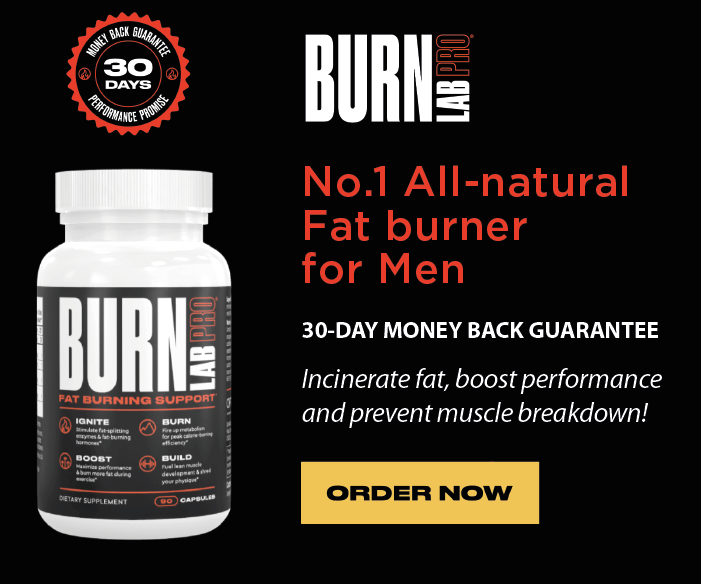Cardio Vs Strength Training: Before, After, or Separate Days?
Written by Martin Ebner
Should you do your cardiovascular exercise before your strength training regimen, afterward, or on different days. The answer is YES!
Ask ten personal trainers this question and you'll get eleven different opinions! When it comes to the debate of when to schedule cardio sessions vis-a-vis strength training, the most important thing is to find a routine you can stick with for the long run (pun intended!). A smart combination of healthy eating, strength training, and cardio is as close to a proverbial Fountain of Youth as you're ever going to find.
But is there actually a formula for getting the most benefit from your cardio workouts and your strength workouts? That really depends on your fitness goals. Are you full-on bodybuilding? Does your goal lean more towards weight loss? Is it a combination of wanting to build muscle while staying lean or are you looking to burn some body fat? The bottom line is to create a training program that meets your overall fitness objectives while minimizing your risk of injury.
The Benefits of Cardio
Cardiovascular exercise, such as swimming, cycling, rollerblading, rowing, jogging, or walking, can improve your health and help you live longer. Cardio is an excellent way to strengthen your heart by increasing your heart rate, maintain a healthy weight, or bring about fat loss. A Psychology Today analysis of 104 studies showed that cardio may help boost one's mood, reduce anxiety, promote relaxation, and even reduce depression. A Healthline.com article lists the many benefits of cardio exercise:
Improved heart health
Lowers blood pressure
Helps regulate blood sugar
Enhanced brain health
Increased metabolic rate/Weight regulation
Improved mood and energy
Stronger immune system
Improves sleep
Improve balance/reduce risk of falls
Experts recommend getting at least 150 minutes of moderate aerobic exercise, or 75 minutes of vigorous activity each week. Brisk walking or swimming are examples of moderate activity. Running or cycling are examples of vigorous activity. Equipment you can use at the gym or at home include:
Treadmill
Stepping machine
Stationary cycle
Ski trainer
Rowing machine
Elliptical trainer
Stairclimber
Related article: HIIT vs Long Distance Cardio for Fat Loss
Cardio After (For Bodybuilding)
Let's face it, we live busy lives. If your goal is increasing muscle mass, but time is an issue, feel free to add some cardio exercise after your weight training session. Even if time isn't really an issue, I find that many bodybuilders (when bulking) avoid cardio exercise to really maximize their gains. Regardless of whether you’re in bulking or cutting season, I recommend incorporating some form of cardiovascular into your program to get all of the health benefits. You can either go for a slightly longer 20 - 30 minutes of moderate-intensity cardio or by doing 10 - 15 minutes of high-intensity cardio intervals after lifting weights. The former is perhaps a better option for overall fat burning, the latter is a better option for weight-lifters who avoid cardio and don’t normally get their heart rate up through aerobic exercise. An example of interval cardio sprints:
Run for one minute at 50 percent of your full speed.
Walk for two minutes.
Run for one minute at 75 percent of your full speed.
Walk for two minutes.
Run for one minute at 80 to 90 percent of your full speed.
Walk for two minutes.
Run as fast as you can for one minute.
Walk for two minutes.
Run at full speed for one minute.
Walk for several minutes to cool down
Related articles:
Cardio After (For Weight Loss)
If you are bodybuilding and do cardio first, you will deplete a lot of your muscles' energy source, glycogen, that you'll need for your strength training. This will tire your muscles before you begin your most strenuous activity and may increase your risk of injury. However, strength training first will deplete your muscles' glycogen stores and, therefore, it will enhance fat burning during the cardio section of your workout because of the lack of easily accessible fuel. If your primary goal is to increase muscle mass, then do strength training first, as mentioned above.
However, if your primary goal is weight loss, but you also want to gain muscle and tone, then do a shorter, low-intensity strength training session followed by your preferred cardio workout routine. As always, be sure to stay well hydrated and mind your balance, especially if running on a treadmill.
Related: Take a Hike, Lose Some Weight: Strategies to Burn Fat While Hiking
Cardio First
Most experts agree that if you're going to do cardio and strength training on the same day, lifting weights before cardio is preferable. However, if your primary goal is to increase your aerobic endurance and/or lose body fat, then you can do cardio first. If you are doing endurance training for a marathon, trying to improve your athletic and sporting performance, or if your main goal is simply to improve your cardiovascular fitness, you should probably do cardio before any resistance training.
If you’re training for a race and you lift weights before cardio, you could actually decrease your endurance. When a group of people performed strength training prior to running, they showed a decrease in endurance compared to the control group that ran first, according to a study published in the journal Applied Physiology Nutrition and Metabolism.
The same logic that says you should prioritize weight training if you’re looking to build strength applies to endurance training. Doing a heavy weight day before doing cardio may fatigue the muscles, causing you to lose proper form while you are doing cardio and increase the risk of injury.
Your body has three energy systems: ATP-PC, glycolysis and oxidative. Each one kicks in at different points of your training. In order to properly train for endurance sports, you need to train all three to be well-rounded. To this end, interval training is the perfect complement to your long runs or bike rides. Research has shown that performing regular bouts of interval training two or three times a week, can improve your oxygenation and reduce the risk of overuse injuries, by helping keep overall training time down.
An article from the Mayo Clinic, Rev Up Your Workout with Interval Training, says that it doesn't need to be complicated. Interval training is simply alternating short bursts (about 30 seconds) of intense activity with longer intervals (about 1 to 2 minutes) of less intense activity.
For instance, if your exercise is walking and you're in good shape, you might add short bursts of jogging into your regular brisk walks. If you're less fit, you might alternate leisurely walking with periods of faster walking. For example, if you're walking outdoors, you could walk faster between certain mailboxes, trees or other landmarks.
Some benefits include:
Burning more calories.
Improving your aerobic capacity.
Helps reduce your risk of heart disease, high blood pressure, and diabetes.
Keeps boredom at bay by adding variety to your exercise routine.
You don't need special equipment.
Separate Days
If you've got the time and lifestyle where you can separate your cardio from your strength training, then you should. Research reported in Scientific American states that it is best to separate your cardio from your resistance training by at least six hours. Their findings indicate that training without a recovery period between sessions (or training twice a day) is not optimal for neuromuscular and aerobic improvements.
Again, it all comes down to your fitness goals. If you want to improve your heart health or lose a little weight, then some low-intensity weight lifting prior to your cardio workout routine would be just fine. But be honest with yourself. If your thinking is, "if I lose a few pounds I will have visible six-pack abs," then you need to recalibrate that thinking. And vice versa with strength training. If your thinking is, "when I can bench-press a Volkswagen, I'll be able to go 15 rounds with Evander Holyfield," you too need to reconsider your thinking.
However, if the event or activity you are training for requires that you perform strength and cardio simultaneously, like American Gladiators, the CrossFit Games, or joining the military, I still recommend separate days if you have the time. That's the bugaboo, though, isn't it? Unless one has a sponsor for their run at American Gladiators, many folks might not have the kind of time to dedicate to separate days.
Actually, what I find more often, is that bodybuilders and powerlifters don't want to make time for their cardio. It's boring to think about jogging on the treadmill for an hour... snore! Instead, opt for something like the cardio sprints mentioned above. Or join an advanced aerobics or spin class. These group exercises take some of the dullness out of cardio with camaraderie and motivational leadership from a trained instructor.
High-Intensity Interval Training (HIIT) and High-intensity circuit training (HICT)
Why not have both cardio and strength training together? An option for those who have less time, less motivation, or just want to mix things up is high-intensity interval training. HIIT is by far the most efficient way to burn fat, burn calories, and improve aerobic capacity. For instance, a 10-minute HIIT routine can burn as many calories as 30 minutes of moderate-intensity work on the treadmill. It is also a way to boost strength training while packing in the same benefits of lower and moderate-intensity aerobic workouts in a much shorter time.
HIIT combines super high-intensity cardio with recovery intervals of strength training exercises, generally at a 1:4 ratio. High-intensity intervals are at 80% of your maximum capacity, while recovery intervals are around 40% of your maximum capacity. An example of an interval cycle can include one minute of mountain climbers, followed by one minute each of squats, deadlifts, handstand pushups, and planks. Repeat this cycle four to six times, or follow up with different 1:4 combinations.
There are limitless possibilities to your HIIT workout. Check out these fantastic examples: 22 HIIT Workouts at Home from 5 to 45 minutes. The article includes embedded videos of the different types of strength training and cardio exercises for all levels and time frames. One of the great things about HIIT is that you can tailor it to your goals and intensity level.
Here’s a straightforward HIIT routine that incorporates both strength and cardio. If you’re a beginner, remember to scale the exercises appropriately. For example, if jumping doesn’t feel good or safe, just do regular squats instead of squat jumps or walk your feet out in your burpees instead of hopping. Try this workout on a treadmill or outdoors. Move straight from one thing to the next as best you can, but always prioritize the quality of your movement over speed.
5-minute warm-up walk
90-second jog, medium pace
30-second sprint
10 push-ups
10 bodyweight squats
90-second jog, medium pace
30-second sprint
20 walking lunge (10 per side)
20 mountain climbers (10 per side)
60-second plank
90-second jog, medium pace
30-second sprint
10 burpees
60-second wall sit
10 squat jumps
90-second jog, medium pace
30-second sprint
5-minute cool-down walk
Professional Trainers
I really can't say enough about enlisting the guidance of a professional, personal trainer. A personal trainer will help you plan your exercise routine as well as helping you with dietary decisions. Being guided by someone from outside your circle and who has worked with many individuals has advantages that you may not be able to imagine. He or she will help you with all aspects of your fitness, not just how many bananas to eat a day or how many squats to do on Thursday. They will help you with nutrition, overall fitness, overall wellness, scheduling activities, and lifestyle choices. Ask around for referrals, check with your gym, or search online for a qualified trainer.
Take Aways
If your primary goal is to increase your aerobic endurance or lose body fat, then you should perform cardio first. If your primary goal is to increase muscular strength, then do strength training first. To get the most out of your workout, perform the exercise that is most important to your goals first, when you are not fatigued. If your fitness goals include overall improvements, finish your workout with the type of exercise you enjoy most.
A cheat-sheet from the American Council on Exercise, advises:
If your goal is better endurance, do cardio first.
If your goal is burning fat and losing weight, do strength training first.
If you want to get stronger, do strength training first.
On upper-body strength training days, you can do either first.
On lower-body strength training days, lift weights first.
If your goal is just general fitness, do either first, but maybe start with the one you like less.
More articles you might enjoy
Body types: How to eat, train and supplement for your body type (Women / Men)
5 Training Methods to help you break through a weight training plateau




